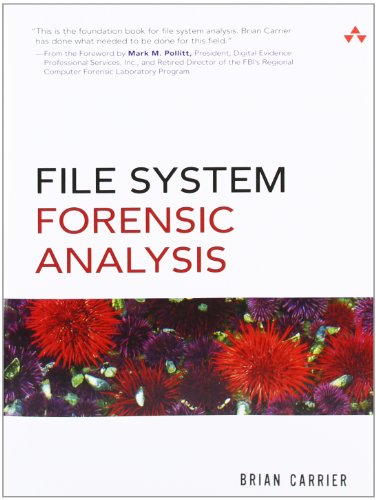File System Forensic Analysis download
Par johnston clinton le mardi, février 7 2017, 02:47 - Lien permanent
File System Forensic Analysis by Brian Carrier


File System Forensic Analysis download
File System Forensic Analysis Brian Carrier ebook
ISBN: 0321268172, 9780321268174
Page: 600
Format: chm
Publisher: Addison-Wesley Professional
This chapter breaks down a file's content and metadata. Digital Forensics with Open Source Tools: Using Open Source Platform Tools for Performing Computer Forensics on Target Systems: Windows, Mac, Linux, Unix, 4) Chapter 8 on File Analysis is the longest chapter (41 pages in length), covering analysis of image files, audio and video files, archive files, and documents. Most digital forensics evidence is stored within the computer's file system, but working with file systems is the most technically challenging aspect of forensic analysis. The author of the " Sleuth Kit " is Brian Carrier which happens to also be the author of a wonderful book called "File System Forensic Analysis" that is a must read for any serious file system analyst. I had recently completed Brian Carrier's, “File System Forensic Analysis,” (also an amazing book) and was looking for something a bit less in-depth and more of a general digital forensics book. I have been spending some time reading File System Forensic Analysis by Brian Carrier which is considered by many to be the primary resource on the subject of file system forensics. The $UsnJrnl file contains a wealth of information about file system activity which can provide more context about what occurred on a system. Besides its other capabilities, fileXray has an extensive feature set geared for HFS+ file system forensics. Grid File Systems: A Forensic Analysis Joshua Boyd College of Information Science and Technology, Radford University Radford, Virginia 24142, United States of America and. I'm excited to announce that my proposed tutorial on file system analysis was accepted for the 22nd Annual FIRST Conference. This is a quick overview of the relevant features—details can be found in the fileXray User Guide and Reference ebook. The most famous ways are data encryption and steganography. Autopsy automates many of the tasks required during a digital forensic analysis using the TASK collection of powerful command line tools as a foundation. File system, in addition, can also be used to hide data. At the time of choosing what to do, I was enrolled in another class focusing on file system forensics and we were doing in depth analysis of the FAT file system.